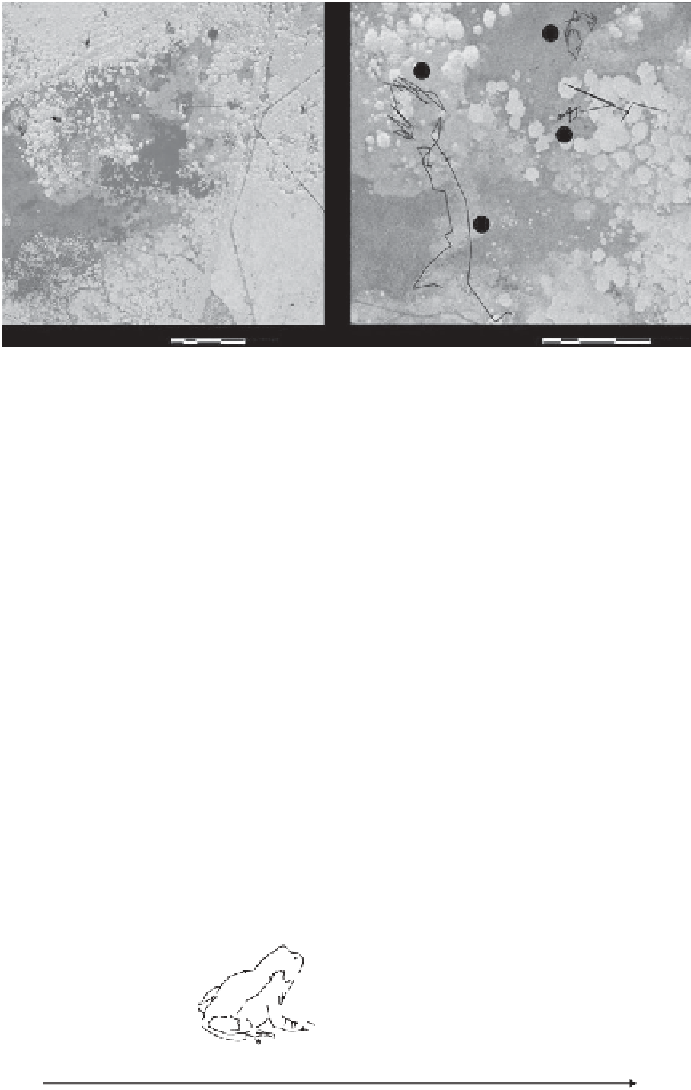Database Reference
In-Depth Information
3
2
4
1
100
0
100
200 Meters
50
0
50
100 Meters
(a)
(b)
Figure 13.3 (a) Distribution of foraging station in the study area of Castelporziano, Rome,
Italy. (b) Examples of foraging paths followed by individual fallow deer. Paths 2 and 3 are
characterized by constant sinuosity, while Paths 1 and 4 are characterized by area-restricted
search.
The question is to compute the probability,
p
(
d,t
), that the individual is at a
distance
d
from the starting point at a given time
t
. Clearly the displacement on
the
n
thmove is
d
=
1
δ
i
, where
δ
i
may be positive or negative according to Rule
1. For instance, with
n
=
5 one may have, among the others, the following series:
w
={−
δ,
+
δ,
−
δ,
−
δ,
+
δ
}
,or
w
={−
δ,
−
δ,
−
δ,
−
δ,
−
δ
}
. Each realization,
w
n
, of this stochastic process is called a
random walk
.
From a behavioral point of view the probability to arrive at coordinate three
(on five moves) is to go rightward three times and leftward twice. In other words,
it is the probability to have three “successes” (and hence two failures) on five
“trials,” probability which is given by the binomial distribution. Of course, the
probability of having five moves leftward (or rightward) is much smaller than
having, for instance, three moves rightward and two moves leftward; this is
because one has many more realizations in this case, as the order of moves is
d
-
δ
0
+
δ
+2
δ
Figure 13.4 A jumping frog in the one-dimensional universe.


